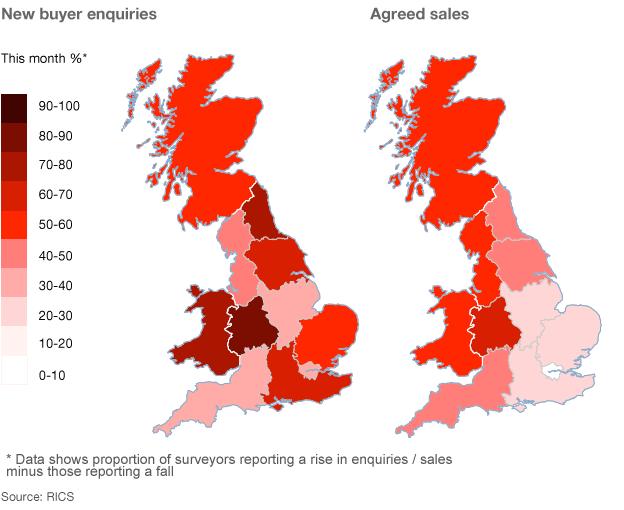UK inflation rate falls to 2.8% in July
- Published

The cost of clothing saw the biggest fall, dropping by 3.2% between June and July
The rate of consumer prices index (CPI) inflation fell to 2.8% in July, down from 2.9% in June, according to the Office for National Statistics (ONS).
The fall came after, external the cost of clothing and leisure and cultural activities decreased.
The rate of retail prices index (RPI) inflation fell as well, to 3.1%, from 3.3% in June.
ONS figures also revealed that house prices in the year to June rose by 3.1%, up from 2.9% in May.
The RPI index is used to calculate many pensions, as well as inflation-linked government bonds. It is calculated differently, as it includes some housing costs and other items not included in CPI. It is typically higher than the CPI measure.
RPI is also used to calculate changes to rail ticket prices. Regulated fares - those that the government controls - will go up by inflation, as measured by the RPI for July, plus 1%.
The rail fare increase will come into effect in January.
Surge in interest
A separate industry survey suggests that home buyer activity is increasing fastest in parts of the UK where prices have been the most depressed. The Royal Institution of Chartered Surveyors (Rics) says prices are rising at their fastest since November 2006.
The largest rise in activity came in the West Midlands and north-east England. Rics said that both regions had seen their highest levels of interest amongst buyers for 14 years.

For the West Midlands, it was the highest level since the figures were first collected, in April 1999. Wales and Scotland also saw a surge in demand, as measured by the number of people registering with estate agents.
In the West Midlands, inquiries turned into action and the region saw some of the biggest increases in sales. Scotland and the North West saw the next largest sales growth.
'Close to market expectations'
Clothing and footwear costs fell by 3.2%, as lower prices from summer sales took effect. In 2012, the fall from June to July was smaller, as retailers discounted earlier, following poor weather.
The cost of long-haul air fares rose at a slower rate than last year, which provided a large downward contribution to transport costs.
However, this was partially offset by rising petrol and diesel prices. They increased by an average of 0.7p and 0.4p per litre respectively between June and July, compared with a fall during the same period in 2012.
"Essentially, both the CPI and RPI reports are very close to market expectations," said Investec's Philip Shaw.
"On the CPI, the figures do suggest that the downtrend in inflation is in place and we think that there is a reasonable chance that inflation will be at the 2% target in spring next year."
IHS's chief European economist, Howard Archer said: "Looking ahead, CPI may yet touch 3% in the near term, given difficult near-term base effects and recently firmer oil prices.
"It should start heading gradually down towards the end of the year. Much will clearly depend on oil price developments."
Inflation has remained above the Bank of England's 2% target since December 2009. It reached a 14-month high in June 2013.
If the rate were to rise above 3%, the Bank of England governor, Mark Carney, would be required to write a letter of explanation to the Chancellor, George Osborne.